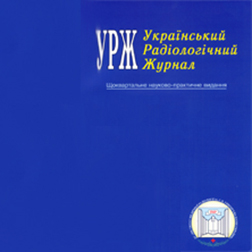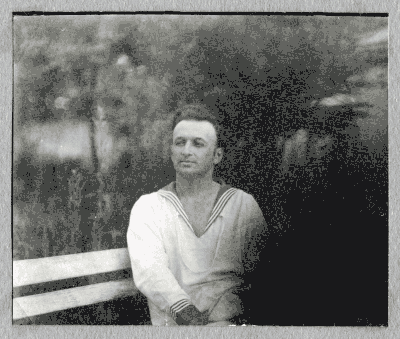UJR 2012, vol XX, # 1

THE CONTENTS
2012, vol XX, # 1, page 5
V.A. Vіnnіkov, І.M. Pilipenko, M.І. Pilipenko
The physical basis and future of radiation therapy
2012, vol XX, # 1, page 25
O.P. Lukashova, O.A. Mіhanovsky, O.V. Slobodyanuk, І.M. Teslenko, N.M. Shit
Ultrastructure of endometrium adenocarcinoma after cryoradiation therapy at total doses of 10, 20 and 30 Gy
Objective: To study the ultrastructure of cells of endometrium adenocarcinoma after cryoradiation therapy at doses of 10, 20 and 30 Gy with the purpose of morphological assessment of its efficacy.
Material and Methods: Standard techniques of electronic microscopy were used to investigate the tumors of 41 patients with stage I-II endometrium adenocarcinoma who were performed pre-operative cryoradiation therapy. Cryodestruction was performed using nitrogen oxide at - 70еС for 5 minutes at each uterus angle and the whole length of the cavity A course of DGT with РОКУС-А unit in the mode of traditional small fractions was delivered 24 hours after cryodestruction (2 Gy per each fraction) up to total focal doses of 10, 20 and 30 Gy.
Results: It was established that cryoradiation therapy caused considerable lesions in the endometrium adenocarcinoma. The percentage of cases of complete destruction was similar in the series with TFD of 10, 20 and 30 Gy, that is 62, 58 and 57 %, respectively, which evidently was associated with cryofactor effect. In the latter cases tumor areas were present due to incomplete destruction. In some of them the cells had irreversible ultrastructure damages and could not perform their functions (growth, division, proliferation). After cryoradiation therapy, dose-dependent increase in the number of such tumors was observed with a significantly high correlation level (r = 0.99, Р = 0.026). In other areas, tumor cells (TC) with unchanged structure preserving their viability were observed. TFD of 20 and 30 Gy resulted in poorly differentiated forms of TC in the state of mitotic division observed in these cells, which proved the presence of clones of radioresistant cells and was an unfavorable sign. A morphological criterion of cryotherapy efficacy can be a total percentage of cases with absence of tumors with irreversible damages of the TC in their remnants. In all series this parameter significantly differed from the controls and was 62, 73 and 85 % at TFD 10, 20 and 30 Gy, respectively.
Conclusion: Our findings show that cryoradiation therapy is an effective method of treatment for endometrium adenocarcinoma, at which 62-85 % of cases the tumors are not revealed or the cells in the intact areas are unviable. Cryoradiation therapy is based on total tumor cryodestruction, observed in almost half of the cases. The dose of irradiation and percentage of the tumors consisting of unviable cells correlate in the investigated groups. In the areas of viable cell, populations of radioresistant TC are observed, which suggest the presence of poorly differentiated forms and cells which divide mitotically.
Key words: endometrium adenocarcinoma, cryoradiation therapy, tumor cell ultrastructure.
2012, vol XX, # 1, page 32
E.M. Mamotyuk, N.E. Uzlenkova, O.V. Nenyukova, O.L. Maslennikov, I.O. Leonova
Comparative radiobiological investigation of antiradiation efficacy of various samples of Noni juice
Objective: To perform comparative radiobiological investigation of antitumor efficacy of 4 samples of Noni juice in experiment on rats at medium severity acute radiation sickness.
Material and Methods: The investigation was performed on 166 white mongrel female rats weighing 160-190 g. Death rate parameters were analyzed after x-ray exposure at a dose of 6.0 Gy and oral administration of one of the four samples of juice of tropical fruit Morinda ctirifolia (Tabari Noni, Hawaiian Noni, Tahitian Noni and Polynesian Noni) for 15 days at a daily dose of 2.5 ml/kg of the body mass by a preventive protocol.
Results: It was established that Tabari Noni and Hawaiian Noni juice had antiradiation properties, significantly increased 30-day survival of rats, reduced early death rate and the 2nd peak of radiation death, and increased average duration of life of the animals. Tahitian juice and especially Polynesian juice proved to be ineffective.
Conclusion: The first state of the experiment (pre-clinical) demonstrated antiradiation efficacy of Noni juice (Tabari and Hawaiian), which allows to recommend it for clinical investigation.
Key words: Noni juice, antiradiation properties, radiation sickness, death arte parameters, integral survival indices.
2012, vol XX, # 1, page 39
L.Y. Vasiliev, E.B. Radzyshevskiy, Ya.E. Vikman, T.P. Yakimova
The findings of statistical processing of data about the patients with second primary tumors (Preliminary communication)
Objective: To perform a reconnaissance statistic analysis of electronic data from the records of the patients with second cancers and patients with late metastatic tumors.
Material and Methods: The records of the patients with second cancers and patients with late metastatic tumors treated at S.P. Grigоriev Institute of Medical Radiology (National Academy of Medical Sciences of Ukraine) within the period of 1980-2003 were selected and converted to an electronic form Primary statistical analysis of the accumulated information was performed using the methods of nonparametric statistics and Statistica software.
Results: The longest period of time between the first and second cancers was determined. A hypothesis about the nosological forms of the first tumor which most frequently resulted in second tumors was generated. By means of comparison of the group with second cancers and the group with metastatic tumors, suggestions about continuation of the disease at involvement of the paired organ, dependence of the second cancer on the age of the patients, the influence of hemotransfusion, radiation and chemotherapy on metachronic tumor development were made.
Conclusion: The use of contemporary information technologies and approaches of evidence-based medicine allowed obtaining additional information from the traditional database, namely, about the course of the disease which is present in the patient’s records.
Key words: second cancers, metastatic tumors, induced tumors, methods mathematical processing.
2012, vol XX, # 1, page 44
M.I. Pilipenko
Stochastic irradiation effects
2012, vol XX, # 1, page 51
D.S. Mechev, O.V. Shcherbina, M.M. Firsov, O.N. Klyusov
PET-CT: theoretical aspects, role in oncology and specialists training
2012, vol XX, # 1, page 56
M.I. Pylypenko, L.Ya. Vasiliev, Ya.E. Vikman, O.M. Tarasova
Second malignant tumors Part II. Factors of risk
2012, vol XX, # 1, page 66
M.I. Pylypenko, L.Ya. Vasiliev, Ya.E. Vikman, O.M. Tarasova
Second malignant tumors Part III. Prophylaxis
2012, vol XX, # 1, page 70
V.A. Vinnikov
Biomarkers of radiation exposure: a short review ІІ. Transcriptomics
2012, vol XX, # 1, page 84
M.I. Pilipenko
Don't blame the usual suspect for cancer (a new theory of tumor formation in the organism) Carlos Sonnenschein, Ana M. Soto.
2012, vol XX, # 1, page 86
Willi A. Kalender
Computed Tomography
3-rd Ed. Publicis Publishing, 2011
Social networks
News and Events
We are proud to announce the annual scientific conference of young scientists with the international participation, dedicated to the Day of Science in Ukraine. The conference will be held on 20th of May, 2016 and hosted by L.T. Malaya National Therapy Institute, NAMS of Ukraine together with Grigoriev Institute for medical Radiology, NAMS of Ukraine. The leading topic of conference is prophylaxis of the non-infectious disease in different branched of medicine.
of the scientific conference with the international participation, dedicated to the Science Day, «CONTRIBUTION OF YOUNG PROFESSIONALS TO THE DEVELOPMENT OF MEDICAL SCIENCE AND PRACTICE: NEW PERSPECTIVES»
We are proud to announce the scientific conference of young scientists with the international participation, dedicated to the Science Day in Ukraine that is scheduled to take place May 15, 2014 at the GI “L.T. Malaya National Therapy Institute of the National academy of medical sciences of Ukraine”. The conference program will include the symposium "From nutrition to healthy lifestyle: a view of young scientists" dedicated to the 169th anniversary of the I.I. Mechnikov.
Ukrainian Journal of Radiology and Oncology
Since 1993 the Institute became the founder and publisher of "Ukrainian Journal of Radiology and Oncology”:


